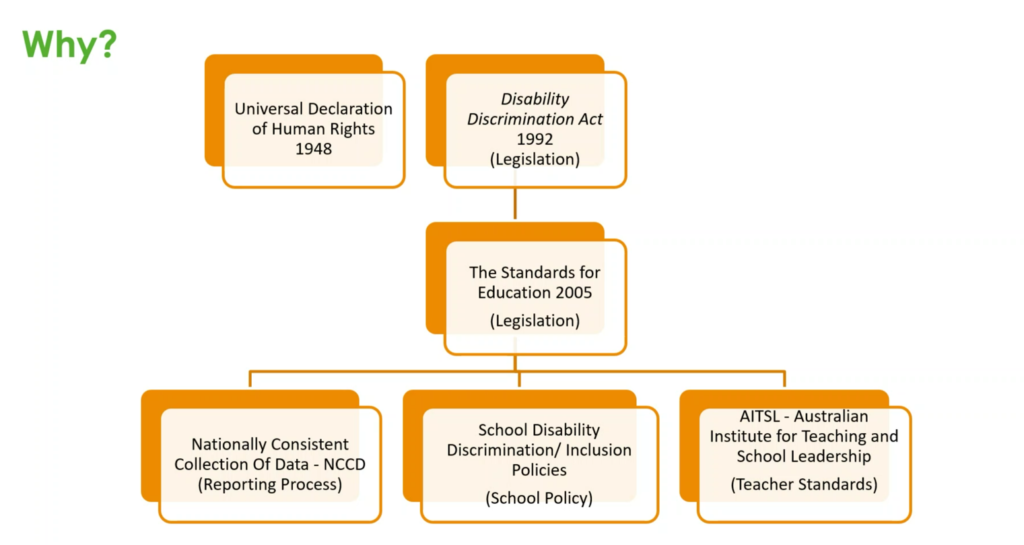
The NCCD is the Nationally Consistent Collection of Data for students with a disability in Australia.
This data is submitted as part of the midyear census by each school on the first Friday in August each year.
Directly quoted from the act:
The Disability Discrimination Act 1992 (DDA)defines disability broadly as:
and includes a disability that:
For the purposes of NCCD the adjustments required by the student must be due to disability not another reason e.g. home life, poor attendance, illness etc. There are some good examples in the case studies to explore this further.
Case studies - Nationally Consistent Collection of Data (nccd.edu.au)
The category is determined by the evidence of adjustments. This may or may not be directly related to the diagnosis. For example an young student with Autism may have difficulties with both the social/emotional aspects of school and the academic curriculum. The evidence of adjustments will guide you which category to select - where have more adjustments been provided?
Teachers often report that they are making adjustments for the NCCD. This is not actually the case. Under disability law and the AITSL teacher standards, teachers are expected to make and record adjustments for students in their classes. The NCCD simply captures this data. The evidence for NCCD should be part of the normal school processes and not something extra.

Schools need to collect evidence over 10 weeks of the school year, this does not have to be 10 consecutive weeks. Obviously, the higher the student need, the more evidence required. I like to refer back to the frequency wordings from the selecting the levels of adjustment document - some days, some times; most days, most times etc
Where the student does not have a diagnosed disability but the student is requiring high levels of adjustments schools may decide to impute the student. Once this is done the student is protected by the DDA and this cannot be removed. Obviously this needs to be done with the parents understanding and consent. Be aware that if you impute a student you must have sufficient evidence (possibly more than a student with a diagnosed disability) to add the student to the census.
From the NCCD documents: "An ‘imputed’ disability is something that someone believes another person has. To impute a disability the school team must have reasonable grounds to make such a judgement. At a minimum the student’s parent, guardian or carer must have been consulted about concerns the school has and been involved in identifying reasonable adjustments to address the identified concerns."
The school NCCD team (not individual teachers usually) will decide student levels based on the written evidence they have. They should review the evidence in each of the 4 categories and make a judgement based on the evidence available. A thorough moderation process should be in place to check for evidence in each category and decide an overall level.
This document will help decide which level. Selecting the level of adjustment (nccd.edu.au)
My advice is to print A3 size so you can read it more easily!
The NCCD website has lots of videos and handouts to support you with this process.
They also have many case studies for discussion and training of key staff.
Warning: Undefined array key "preview" in /home2/hashb/public_html/tracyashbridge.com/wp-content/plugins/oxygen/component-framework/components/classes/comments-list.class.php on line 102